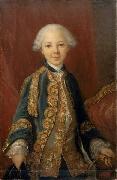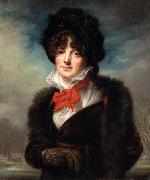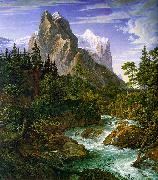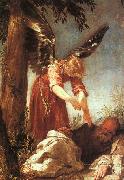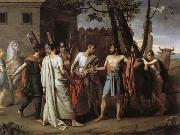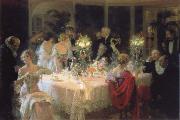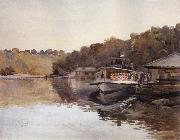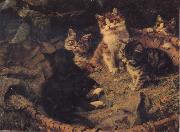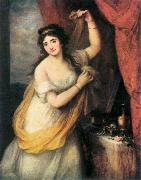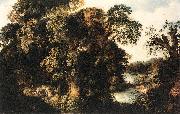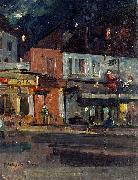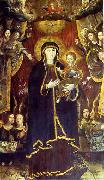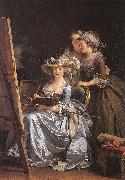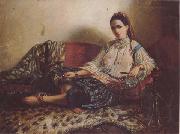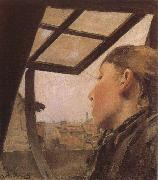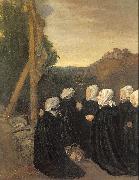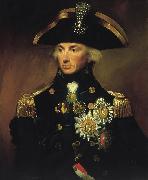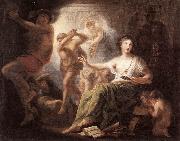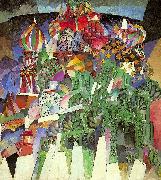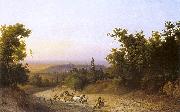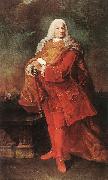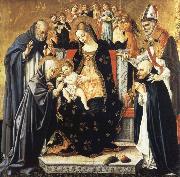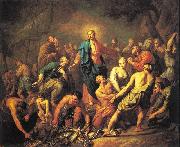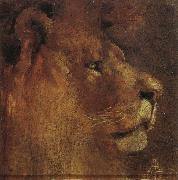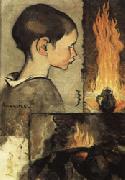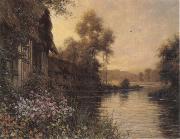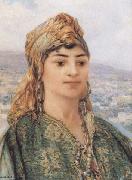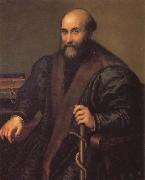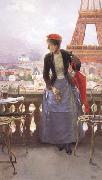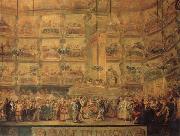|
|
|
|
|
|
|
|
|
|
 |
Jost Amman
|
|
(June 13, 1539, Zerich - March 17, 1591, Nuremberg, Bavaria) was a Swiss artist, celebrated chiefly for his woodcuts, done mainly for book illustrations.
Amman was born in Zurich, the son of a professor of Classics and Logic. He was himself well-educated. Little of his personal history is known beyond the fact that he moved to Nuremberg in 1560, where he continued to reside until his death in March 1591. He worked initially with Virgil Solis, then a leading producer of book illustrations. His productiveness was very remarkable, as may be gathered from the statement of one of his pupils, that the drawings he made during a period of four years would have filled a hay wagon. A large number of his original drawings are in the Berlin print room. About 1,500 prints are attributed to him. He was one of the last major producers of woodcuts for books, as during his career engravings were gradually taking over that role. Although like most artists for woodcut he normally let a specialist formschneider cut the block to his drawing, he sometimes included both a cutter's knife and a quill pen in his signature on prints, suggesting he sometimes cut his own blocks.
A series of engravings by Amman of the kings of France, with short biographies, appeared in Frankfurt in 1576. He also executed many of the woodcut illustrations for the Bible published at Frankfurt by Sigismund Feierabend. Another serial work, the Panoplia Omnium Liberalium Mechanicarum et Seden-tariarum Artium Genera Continens, containing 115 plates, is of great value. Amman's drawing is correct and spirited, and his delineation of the details of costume is minute and accurate. Paintings in oil and on glass are attributed to him, but none have been identified.
|
|
|
|
|
|
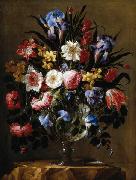 |
Juan de Arellano
|
|
(3 August 1701 - 13 October 1776) was a Spanish painter of the Baroque era who specialized in floral still life paintings.
Born in Santorcaz, near Madrid, where he died. He was a pupil of Juan de Solis. Heavily influenced by Flemish and Italian painters (such as Mario Nuzzi), Juan de Arellano was considered to be exceptional in this thematic. According to one of his colleagues, de Arellano decided to focus exclusively on floral paintings because it offered more pay while requiring less work . Some of de Arellano's most famous pieces include Bouquet of Flowers (c.1660), and Garland of Flowers, Birds and Butterfly, currently on display at the Louvre. He also painted for the sacristy of the church of San Jerenimo el Real of Madrid. See Bodegen for a description of one style of Spanish still life painting. |
|
|
|
|
|
|
|
|
|
|
|
|
|
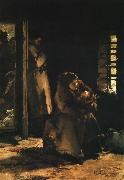 |
Kazimierz Alchimowicz
|
|
(1840 ?C 1916) was a Lithuanian-born Polish romantic painter.
Born in Dziembrow, Lithuania, Alchimowicz was banished to Siberia for six years for his participation in the January Uprising. After his return, he enrolled in a drawing class in Warsaw taught by Wojciech Gerson. The class had a great influence on his later artistic works. He later studied art in Munich, Germany and Paris, France. While staying in France, Alchimowicz was a craftsmen decorating porcelain and earthenware crafts. He settled permanently in Warsaw in 1880 to paint professionally. His artistic inspiration mainly came from patriotic topics and history. |
|
|
|
 |
KEY, Adriaan
|
|
Flemish painter (b. ca. 1544, Antwerpen, d. after 1589, Antwerpen). |
|
|
|
|
|
|
|
|
|
|
|
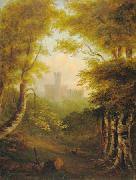 |
Lady Anne Barnard
|
|
(12 December 1750-6 May 1825), nee Anne Lindsay, eldest daughter of James Lindsay, 5th Earl of Balcarres was born at Balcarres House, Fife, Scotland. She was author of the ballad Auld Robin Gray and an accomplished travel writer, artist and socialite of the period. Her five year residence in Cape Town, South Africa, although brief, had a significant impact on the cultural and social life of the time. |
|
 |
Laura Theresa Alma-Tadema
|
|
(1852 C 15 August 1909 in Hindhead) was from 1871 the second wife of the painter Lawrence Alma-Tadema and a painter in her own right.
A daughter of Dr George Napoleon Epps (who was brother of Dr John Epps), her two sisters were also painters (Emily studied under John Brett, a Pre-Raphaelite, and Ellen under Ford Madox Brown), whilst Edmund Gosse and Rowland Hill were her brothers-in-law. It was at Madox Brown's home that Alma-Tadema first met her in December 1869, when she was aged 17 and he 33. (His first wife had died in May that year.) He fell in love at first sight,and so it was partly her presence in London (and partly the fact that only in England had his work consistently sold) that influenced him into relocating in England rather than elsewhere when forced to leave the continent by the outbreak of the Franco Prussian War in July 1870. Arriving in London at the beginning of September 1870 with his small daughters and sister Artje, Alma-Tadema wasted no time in contacting Laura, and it was arranged that he would give her painting lessons. During one of these, he proposed marriage. As he was then thirty-four and Laura was now only eighteen, her father was initially opposed to the idea. Dr Epps finally agreed on the condition that they should wait until they knew each other better. They married in July 1871 and, though this second marriage proved childless, it also proved enduring and happy, with Laura acting as stepmother to her husband's children by his first marriage.
The Paris Salon in 1873 gave Laura her first success in painting, and five years later, at the Paris International Exhibition, she was one of only two English women artists exhibited. |
|
|
|
|
|
|
|
|
|
|
|
|
|
 |
Leon Augustin Lhermitte
|
|
(1844 - 1925) was a French realist painter and etcher whose primary subject matter was of rural scenes depicting the peasant worker.
He was born in Mont-Saint-Pere. A student of Lecoq de Boisbaudran, he gained recognition after his show in the Paris Salon in 1864.
His many awards include the French Legion of Honour (1884) and the Grand Prize at the Exposition Universelle in 1889. Lhermitte died in Paris in 1925.
Lhermittees innovative use of pastels won him the admiration of his contemporaries. Vincent Van Gogh wrote that eIf every month Le Monde Illustre published one of his compositions ... it would be a great pleasure for me to be able to follow it. It is certain that for years I have not seen anything as beautiful as this scene by Lhermitte ... I am too preoccupied by Lhermitte this evening to be able to talk of other things.e
Lhermitte's etchings and paintings are housed in museums around the world including Boston, Washington, Chicago, Montreal, Brussels, Rheims, Paris, Moscow and Florence.
|
|
|
|
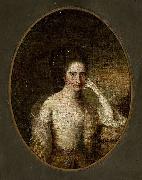 |
Leonor de Almeida Portugal
|
|
Leonor de Almeida Portugal de Lorena e Lencastre (Lisboa, 31 de outubro de 1750 - Benfica, 11 de outubro de 1839) foi uma nobre e poetisa portuguesa. |
|
|
|
|
|
|
|
|
|
|
|
|
|
|
|
|
|
|
|
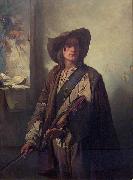 |
Louis Gallait
|
|
(9 or 10 May 1810 - 20 November 1887) was a Belgian painter. His d his reputation especially with the large painting of Charles V's abdication. Gallait's works were considered as the basis for a desirable renewal of historical paintings because of the realism, costume faithfulness and colorful posture of his paintings. His last artwork was sent on tour in Germany and that led to new signals even among German historians. He was also a distinguished portrait painter.
Gallait died in Brussels in 1887. There is a painting by Louis Gallait at the Norton Art Museum in West Palm Beach, Florida ("Art and Liberty").
|
|
|
|
|
|
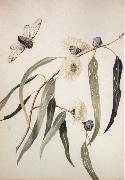 |
Louisa Anne Meredith
|
|
English miniaturist, watercolourist, engraver, poet, writer and botanist .
1812-1895
|
|
|
|
|
|
|
|
|
|







